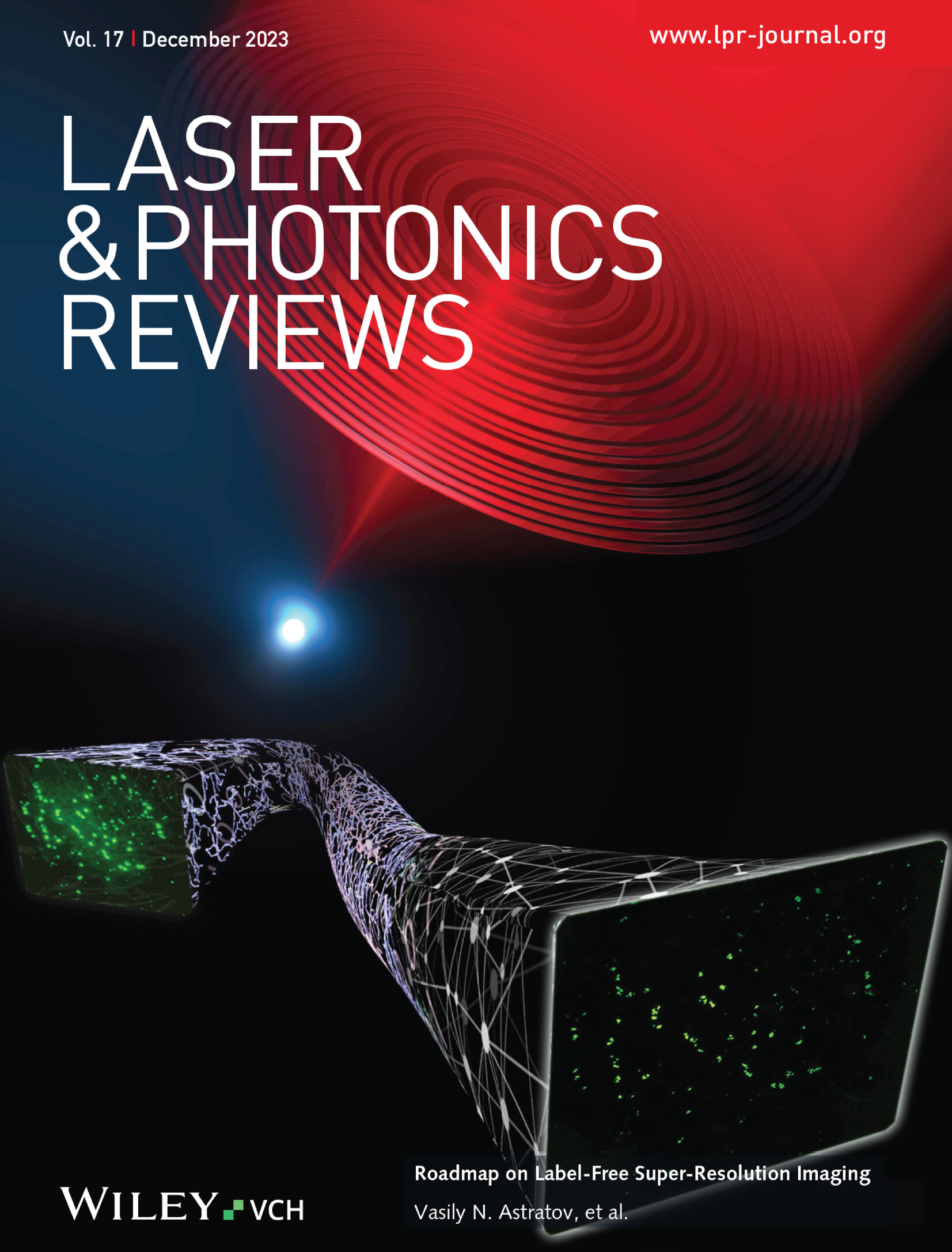冷冻干燥二氧化硒纳米粒子夹层实现高效稳定的硒化锌蓝光 QLED
IF 9.8
1区 物理与天体物理
Q1 OPTICS
引用次数: 0
摘要
量子点发光二极管(qled)因其出色的色彩性能而成为显示和照明应用的下一代技术。然而,尽管取得了相当大的进展,但蓝色qled,特别是基于非重金属材料的蓝色qled,在效率和稳定性方面继续面临重大挑战,落后于红色和绿色qled。本文提出了一种新的策略,通过引入冷冻干燥技术制备的SnO2纳米颗粒(NPs)作为量子点(QD)层和ZnO电子传输层(ETL)之间的导电中间层来提高znsete基蓝色qled的性能。该方法改善了SnO2 NPs的色散,降低了薄膜表面粗糙度,有效抑制了器件泄漏电流。此外,冷冻干燥过程最大限度地减少了SnO2中的氧空位,减少了QD/ETL界面上的激子猝灭。因此,利用冻干SnO2 NP中间层的znset基蓝色qled实现了20.8%的最大外量子效率(EQE),峰值亮度为6017 cd m−2,T50工作寿命为130.7 h,亮度为100 cd m−2。这些发现代表了环保型蓝色QLED在效率和稳定性方面的重大改进,并为推进QLED技术提供了有价值的见解。本文章由计算机程序翻译,如有差异,请以英文原文为准。

High-Efficiency and Stable ZnSeTe-Based Blue QLEDs Enabled by Freeze-Dried SnO2 Nanoparticle Interlayers
Quantum dot light-emitting diodes (QLEDs) have emerged as a promising next-generation technology for display and lighting applications due to their outstanding color performance. However, despite considerable progress, blue QLEDs, especially those based on nonheavy metal materials, continue to face significant challenges in efficiency and stability, falling behind their red and green counterparts. Herein, a new strategy is presented to enhance the performance of ZnSeTe-based blue QLEDs by introducing SnO2 nanoparticles (NPs) prepared via freeze-drying technology as a conductive interlayer between the quantum dot (QD) layer and ZnO electron transport layer (ETL). This approach improves the dispersion of SnO2 NPs, reduces film surface roughness, and effectively suppresses device leakage currents. Furthermore, the freeze-drying process minimizes oxygen vacancies in SnO2 and reduces exciton quenching at the QD/ETL interface. As a result, the ZnSeTe-based blue QLEDs utilizing the freeze-dried SnO2 NP interlayer achieve a maximum external quantum efficiency (EQE) of 20.8%, a peak brightness of 6017 cd m−2, and a T50 operational lifetime of 130.7 h at a brightness of 100 cd m−2. These findings represent a significant improvement in the efficiency and stability of environmentally friendly blue QLEDs and provide valuable insights for advancing QLED technology.
求助全文
通过发布文献求助,成功后即可免费获取论文全文。
去求助
来源期刊
CiteScore
14.20
自引率
5.50%
发文量
314
审稿时长
2 months
期刊介绍:
Laser & Photonics Reviews is a reputable journal that publishes high-quality Reviews, original Research Articles, and Perspectives in the field of photonics and optics. It covers both theoretical and experimental aspects, including recent groundbreaking research, specific advancements, and innovative applications.
As evidence of its impact and recognition, Laser & Photonics Reviews boasts a remarkable 2022 Impact Factor of 11.0, according to the Journal Citation Reports from Clarivate Analytics (2023). Moreover, it holds impressive rankings in the InCites Journal Citation Reports: in 2021, it was ranked 6th out of 101 in the field of Optics, 15th out of 161 in Applied Physics, and 12th out of 69 in Condensed Matter Physics.
The journal uses the ISSN numbers 1863-8880 for print and 1863-8899 for online publications.

 求助内容:
求助内容: 应助结果提醒方式:
应助结果提醒方式:


